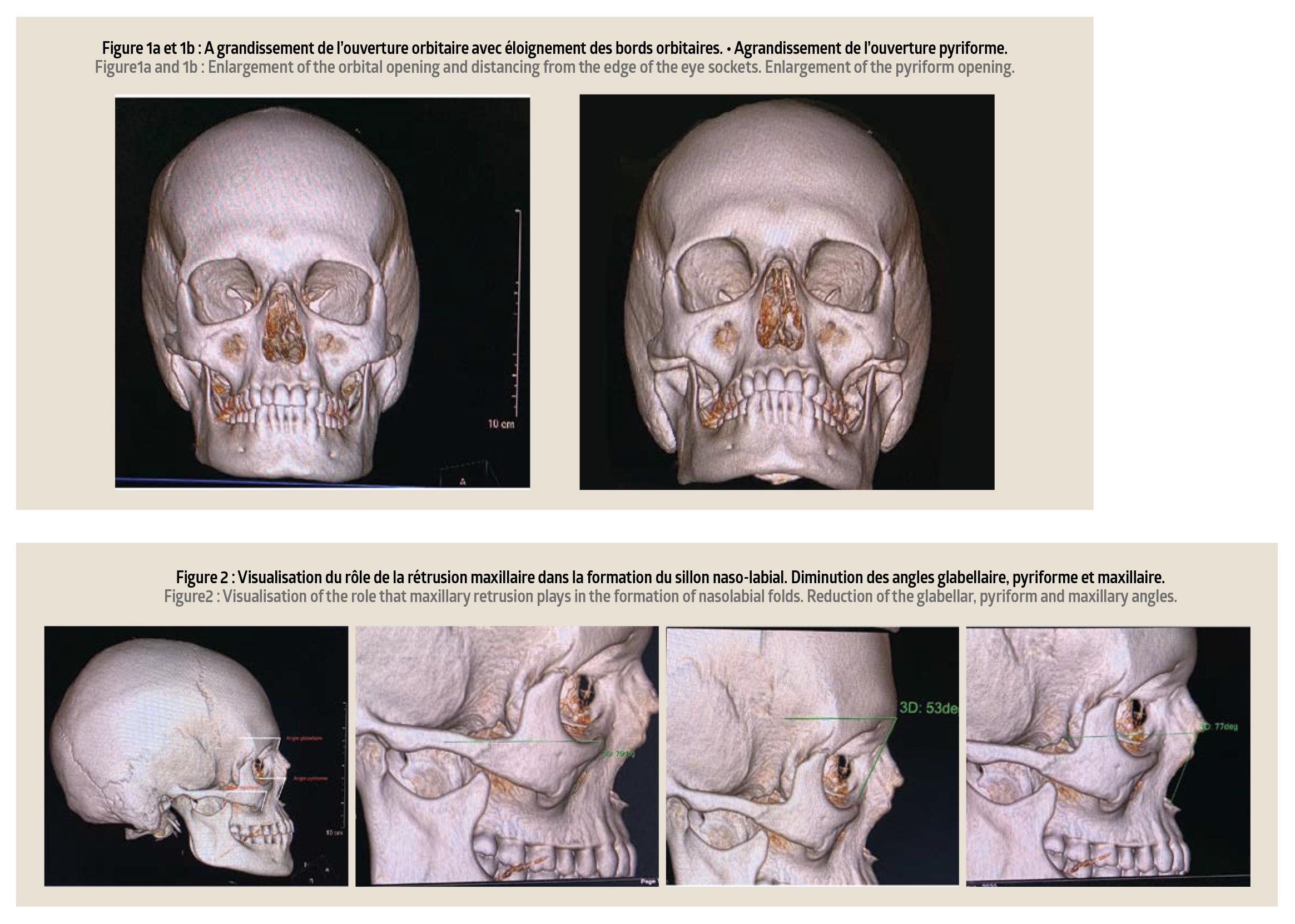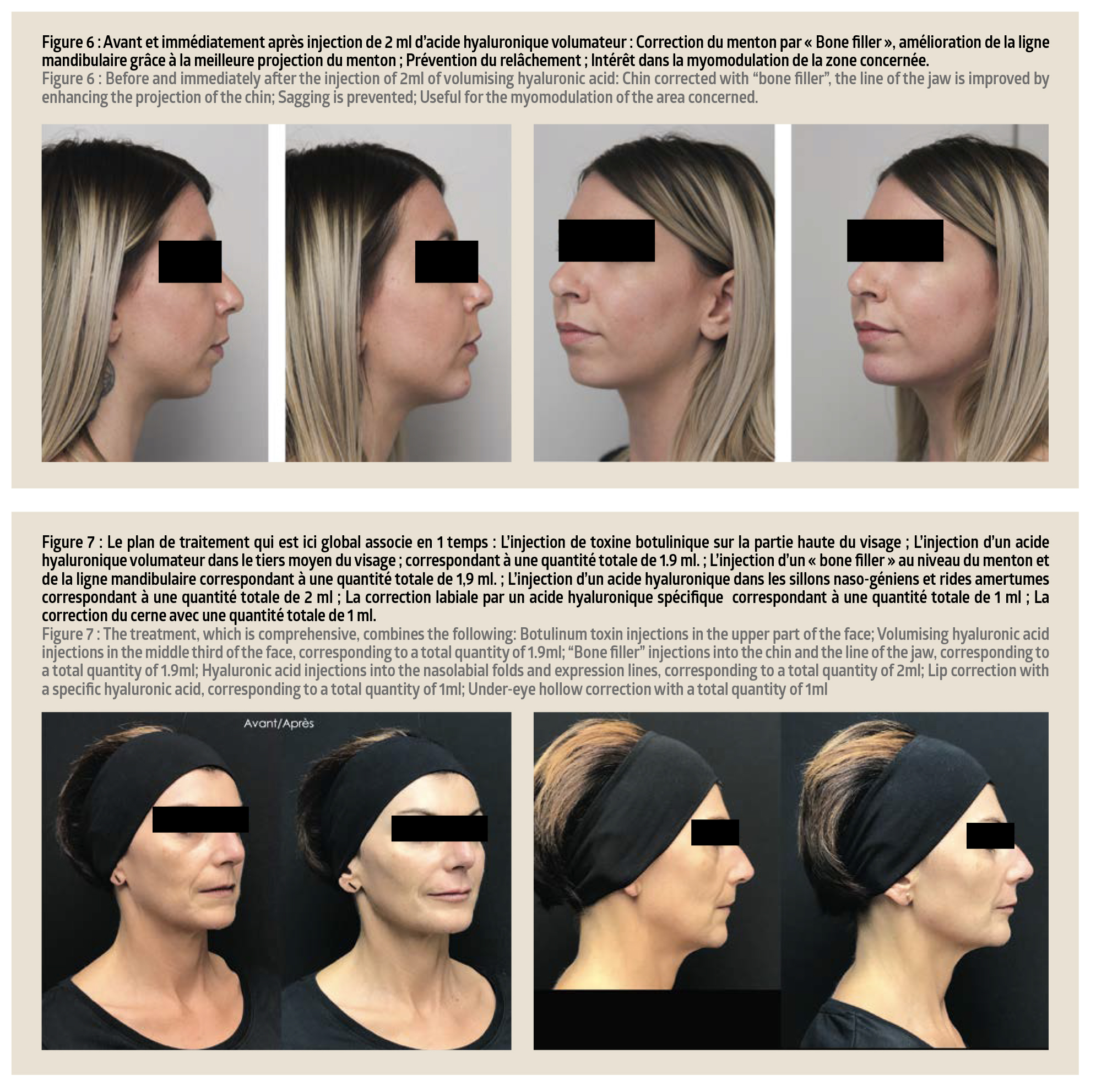By the doctor Thierry Michaud
The treatment and prevention of facial aging using volumising hyaluronic acid injections.
The concept of structural facial aesthetics is a paradigm that establishes a close link between facial aesthetics and bone structure, upon which is it largely dependent. The aesthetic of the face is strongly determined by the bone structure that supports all of the face’s soft tissue, and the way our face ages is in direct correlation with the way our bone structure changes as we age.
The launch of highly volumising hyaluronic acids (“bone fillers”), which possess rheological characteristics that combine high cohesivity with high elasticity to supplement a lack of bony support, sheds new light on the correction and prevention of facial aging and gives real meaning to this paradigm.

Specific bone aging
As I have already said, bone aging is a dynamic process that has a significant impact on the facial aesthetic. When stu- died properly, particularly in 3D scans, it is characterised by
atrophy and a loss of volume, whose main consequence is a loss of the support and projection in the soft tissue, which affects the different levels of the face’s bony structure. The main structural changes that occur as the bone ages are sum- marised in figures 1 to 3.

By observing our patients, we can often find connections between the bone structure and the appearance of certain signs of aging caused by a loss of bony support, namely in the case of facial asymmetry. (Fig. 4)

Facial bone capital and preventing facial aging
It is easy to understand that, both in facial morphology and in facial aging, the notion of bone structure is primordial and defines the face’s “bone capital”. All levels must be considered: forehead, superciliary arches, maxillary osteodental support, jaw and chin. Particular attention should be paid to the zygomatic arches and the chin: a strong bone structure here can provide a lot of support, which keeps the soft tissue taut and limits any sagging. Conversely, a weak bone structure promotes ptosis and a potential loss of volume, particularly in the fat compartments.
Identifying patients with a weak bone structure allows us to flag those for whom minor losses of volume or moderate tissue sagging will have a significant and negative effect on the signs of aging. In these patients, the early correction of lost volumes, even when only minor, will have a very positive result as it will maintain the positive facial expressions as well as preventing facial aging.
What is more, in the case of early treatment, the quantities of hyaluronic acid required will be lower if it is injected into key points, identified by an aging assessment, thus contributing to the natural appearance of the results. Finally, as we have said, the availability of “bone fillers” with a suitable rheology allows us to provide early support for deficient bone structures by injecting these products right next to the bone. These hyaluronic acids are characterised by their high cohesivity and elasticity, which is why we refer to them as “bone fillers” (Figure 5).
This corrective and preventative approach is illustrated by the clinical case shown in figures 6 and 7.
We focus on correcting the weak bone structure so as to improve the projection of the soft tissue in the areas concerned and reduce the impression of sagging and lost volumes which are responsible for negative expressions.

Structural facial aesthetics is a new paradigm that highlights the major role played by the bone structure in the face’s morphology as well as its aging. It leads us to identify patients whose facial aging is accelerated due to a lack of bony support, promoting a loss of volume and sagging in the soft tissue, which thus contri- butes to the early appearance of negative expressions connec- ted with age. By treating the bone structure, and by identifying and treating any patients flagged, we can effectively prevent facial aging. This early correction is now possible thanks to the development of hyaluronic acids with suitable rheological characteristics in terms of viscosity, elasticity and cohesivity, which allows them to act as a substitute for a deficient bone structure.
Références :
1. Shiffman MA, Di Giuseppe A, Prendergast PM. Anatomy of the Face and Neck. Cosmetic Surgery, DOI 10.1007/978-3-642-21837-8_2, © Springer-Verlag Berlin Heidelberg 2012
2. Belhaouari L, Beylot C, Gassia V, Michaud T, Quinodoz P. L’Art des injections en esthétique. Rajeunissement et embellissement du visage. Editions Arnette, 2021.
3. Michaud T, Gassia V, Belhaouari L. Facial dynamics and emotional expressions in facial aging treatments. J Cosm Dermatol 2015; 14, 9-21.
 By the Doctor Thierry Michaud
By the Doctor Thierry Michaud
Specialist in facial aging and aesthetic techniques for the face.
Laureate of Strasbourg Medical Faculty. Member of the French Dermatology Society.
President of the French Dermatology Society’s Aesthetic and Corrective Dermatology Group (gDEC). Manager of the Cosmetic Dermatology Collection at Editions Arnette.
More information esthetique-dermatologie.com/fr














